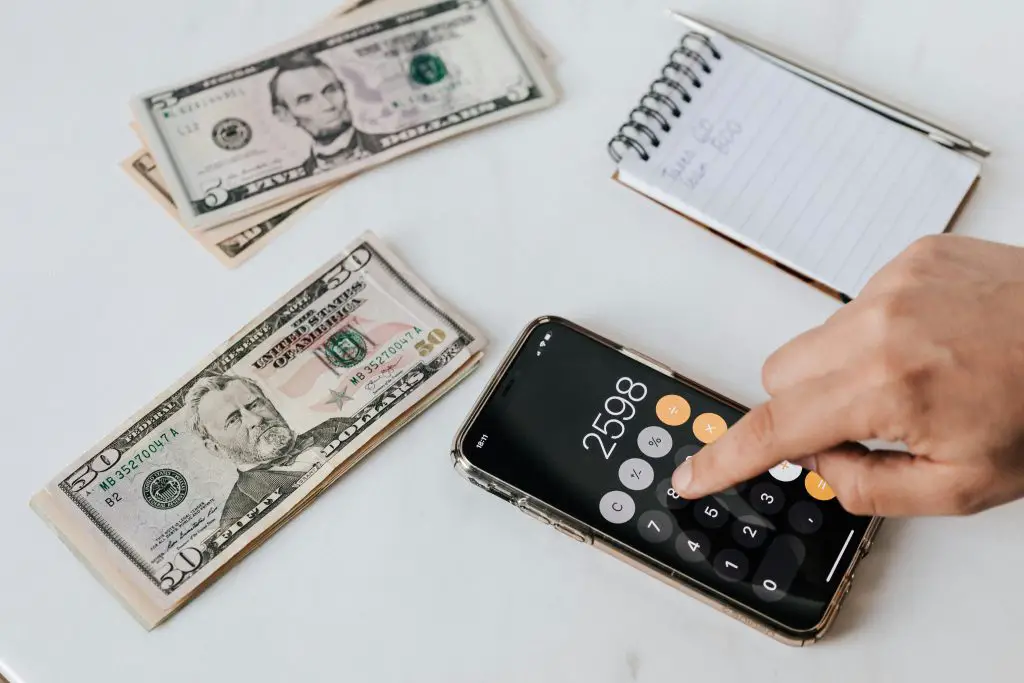What You Need to Know About Form 8888: Allocation of Refund in 2025
Publicado:
Principales conclusiones
- Form 8888 allows you to split your federal tax refund into up to three different accounts, giving you some flexibility in how you want to handle your refund. You can send it to multiple banks, or even mix things up with different types of accounts, like a checking account, savings account, or even a retirement account. This is a great way to save, pay off debt, or even set aside some funds for specific goals.
- One cool feature of Form 8888 is that you can use it to buy U.S. Series I Savings Bonds directly with your refund. These bonds are government-backed, which makes them a low-risk option for long-term savings. They’re especially popular for building up savings for kids or grandkids, since they grow in value over time and can be a great gift that keeps on giving.
- If you're filing a joint return with your spouse, you both have the option to divide your refund however you choose, whether that’s equally or in a way that works best for both of you. Just keep in mind that all the accounts you direct the refund to must be in both of your names, so no splitting it up with other family members' accounts unless they’re jointly owned by both of you.
- It’s important to note that you can’t use Form 8888 if the IRS is applying your refund to any unpaid debts, like back taxes, student loans, or child support. In these situations, you might receive a smaller refund than expected—or in some cases, nothing at all—because the IRS will apply the refund directly to settle those debts first.
- Finally, always double-check the bank account details you provide on Form 8888. If there’s even a small mistake with your routing or account number, it could delay your refund or result in the IRS sending you a paper check instead.
Tax season is no one’s favorite time of year, but if you’re due for a refund, there’s at least something to look forward to. And that’s where Form 8888 might come into play.
If you want to have more control over where your tax refund goes, whether you’re splitting it between accounts, buying a savings bond, or sending part of it to someone else, Form 8888 is how you make that happen. It’s a pretty handy tool, and it’s worth knowing how it works so you can take full advantage of it.
Let’s walk through everything you need to know about Form 8888, from what it does to how you can use it wisely.
What Is Form 8888?
Form 8888, AKA “Allocation of Refund (Including Savings Bond Purchases)”, is used when you want to split your federal tax refund in more than one way. The IRS lets you deposit your refund directly into up to three different accounts, such as a checking account, savings account, retirement account, or even a health savings account (HSA). You can also choose to use part of your refund to buy U.S. Series I Savings Bonds — and yes, those are still a thing in 2025.
If you’re not interested in doing anything fancy with your refund, you won’t need Form 8888. But if you want to divide it up a bit or take advantage of a savings bond, this is the form to use.

Who Should Use Form 8888?
You should consider using Form 8888 if you want to deposit your refund into more than one account at the same time. Or maybe you’re sending part of your refund to a joint account with your spouse and the rest into a personal savings account. Or maybe you want to buy savings bonds for your kids or grandkids. Form 8888 gives you the flexibility to do all of that in a single step when you file your taxes.
It’s also useful if you’re filing a paper return and you want to avoid the wait of a mailed check. Direct deposit is faster, and with Form 8888, you’re not stuck with just one account.
How Form 8888 Works
Using Form 8888 is actually pretty straightforward. When you file your tax return, whether you do it electronically or on paper, you attach Form 8888 if you want your refund split or used for a savings bond purchase.
You’ll enter up to three separate accounts, including the routing number and account number for each. You’ll also need to specify whether the account is a checking or savings account. If you’re buying Series I Savings Bonds, you’ll enter the amount you want used for that purpose and the name of the recipient (which can be you or someone else).
Keep in mind that if you’re using tax software, the process is often built into the step-by-step refund section, so the form may be completed automatically in the background. But if you’re filing by hand or just curious, it’s good to understand what’s happening.
Limits and Rules for 2025
As of the 2025 tax year, the IRS still allows you to split your refund into up to three separate accounts. However, you can’t deposit part of your refund into someone else’s account unless you’re buying savings bonds on their behalf. Each account must be in your name, your spouse’s name, or both if filing jointly.
If you’re buying savings bonds, you can request up to $5,000 of your refund for that. Bonds are issued in multiples of $50, and any excess is sent to you as a check or deposited depending on your setup.
Also, Form 8888 can’t be used if your refund is being offset due to debts like back taxes, student loans, or child support. In those cases, the refund might be reduced or entirely taken before you get a chance to allocate it.

Common Scenarios Where You’d Use Form 8888
Maybe you want to be strategic about your money; use part of your refund to pay down debt, another part to go into a rainy-day fund, and the rest to treat yourself a little. Or maybe you’re trying to set up automatic savings habits, and putting part of your refund into a retirement or health savings account feels like a good step. Form 8888 can help you in either scenario.
Form 8888 is also useful for parents and grandparents who want to purchase savings bonds for minors. You can specify the name of the recipient, and the bonds will be issued in their name.
Even if you’re just trying to avoid temptation and not have your entire refund land in your checking account, this form can help you stay on track. Hey, even the best among us can’t always avoid treating ourselves.
Filing Tips and Things to Watch Out For
When using Form 8888, double-check all your routing and account numbers. A single mistake can cause a delay or even cause your refund to bounce back to the IRS. If that happens, they’ll mail a paper check, which takes longer.
Also, be realistic about how much you’re getting back. Don’t try to allocate more than your total refund, and don’t try to split it in ways that aren’t allowed. For example, you can’t use Form 8888 to send part of your refund to your credit card account or to pay bills directly. It’s only for deposits and savings bond purchases.
And if the IRS adjusts your refund amount for any reason, like a math error or debt offset, they’ll apply the changes in the order you listed on Form 8888.
The Final Word on Form 8888…
Form 8888 might not be the most talked-about tax form, but it gives you a lot of flexibility if you’re expecting a refund. Whether you’re trying to spread your refund across multiple accounts, buy savings bonds, or just be intentional with how you use your money, this form can help you make the most of tax season.
It’s not complicated, but it does require a little attention to detail. If you plan ahead and use it the right way, Form 8888 can help you treat your tax refund like a financial tool instead of just a lump sum.

Form 8888: FAQ
1. What is the main purpose of Form 8888?
Form 8888 is used to give you more control over how your federal tax refund is distributed. Instead of receiving your entire refund as one lump sum in a single bank account or as a check, you can split it into up to three parts and send each part to a different account. You can even use part of your refund to buy Series I Savings Bonds if you’d like. This form makes it easier to manage your refund the way that works best for you—whether that means saving, investing, or simply spreading it around for budgeting purposes.
2. Can I use Form 8888 to send money to someone else’s bank account?
No, you can’t. All the accounts listed on Form 8888 must be in your name, your spouse’s name (if filing jointly), or both. The only exception is if you’re using part of your refund to buy savings bonds for someone else, such as a child or grandchild. In that case, you’re allowed to list another individual’s name for the bond purchase. But for direct deposits, you can’t send money to a friend, family member, or unrelated account holder’s bank account.
3. What happens if I enter incorrect bank information on Form 8888?
If you make a mistake when entering your routing or account number, the IRS will attempt to deposit the money based on the information you provided. If the account doesn’t exist or can’t accept the funds, the deposit will bounce back. In that case, the IRS will automatically mail you a paper check, which will take longer to arrive. Unfortunately, if the incorrect information leads to a valid but wrong account (one that actually exists but isn’t yours), there’s a chance the funds could be deposited into that account, and you’ll need to work with the bank directly to recover them. So it’s important to check those numbers carefully before filing.
4. Can I use Form 8888 if I owe money on student loans or back taxes?
Not exactly. If the IRS determines that part or all of your refund needs to be offset to cover past-due debts like student loans, child support, or back taxes, they’ll reduce your refund before it’s split based on what you entered on Form 8888. You can still fill out the form, but the IRS will apply your allocations based on the adjusted refund amount. If your entire refund is taken, Form 8888 won’t be processed at all. You’ll get a notice explaining where your refund went and why.
5. Is there a maximum limit on how much of my refund I can use to buy savings bonds?
Yes, the limit is currently $5,000 worth of Series I Savings Bonds per return. If you request more than that using Form 8888, the IRS will issue bonds in $50 increments up to $5,000, and the remaining amount will be sent to you by check or deposited into the account you designated. These bonds are issued in paper form and mailed to you or the person you listed as the recipient. It’s a great way to build long-term savings or give a gift that grows over time, especially if you’re thinking about future college expenses or other big goals.
6. Do I need to use Form 8888 if I’m only depositing my refund into one bank account?
Nope, you don’t need Form 8888 if you’re just sending your refund to a single account. When you file your tax return, there’s a regular section where you can enter your bank routing and account number for direct deposit. Form 8888 is only required when you want to split your refund among multiple accounts or buy savings bonds. If you’re keeping things simple with just one account, you can skip the extra form entirely.


